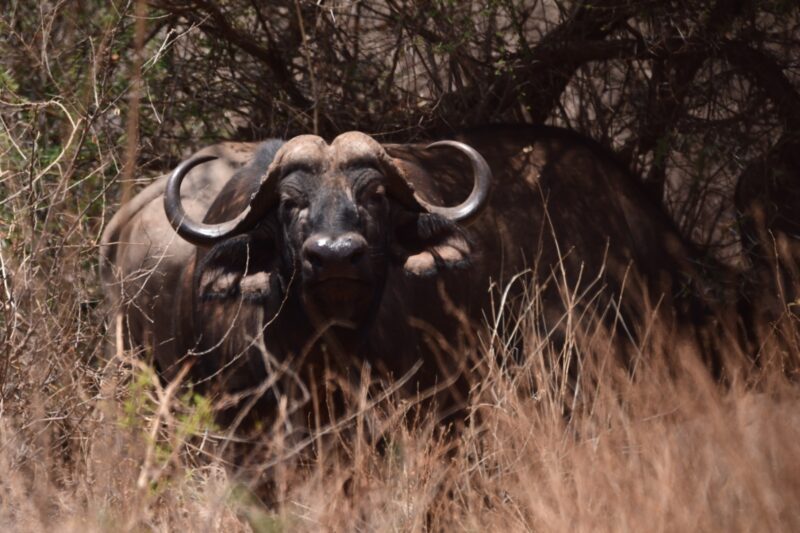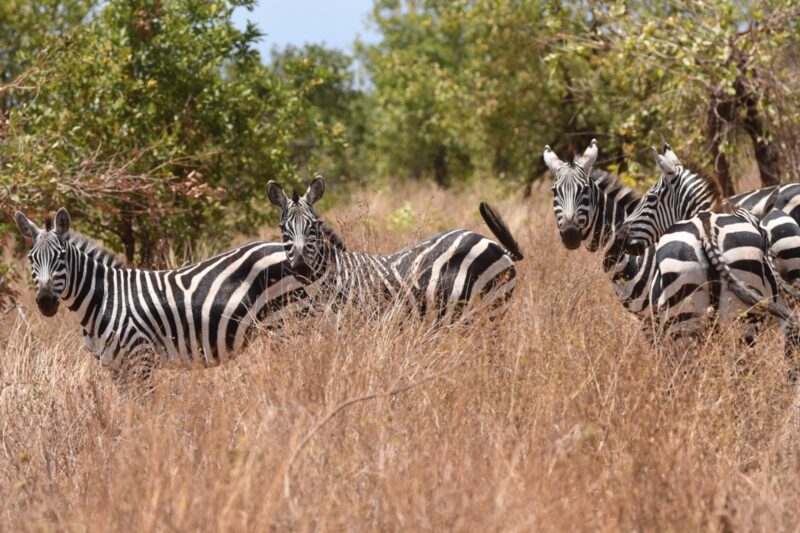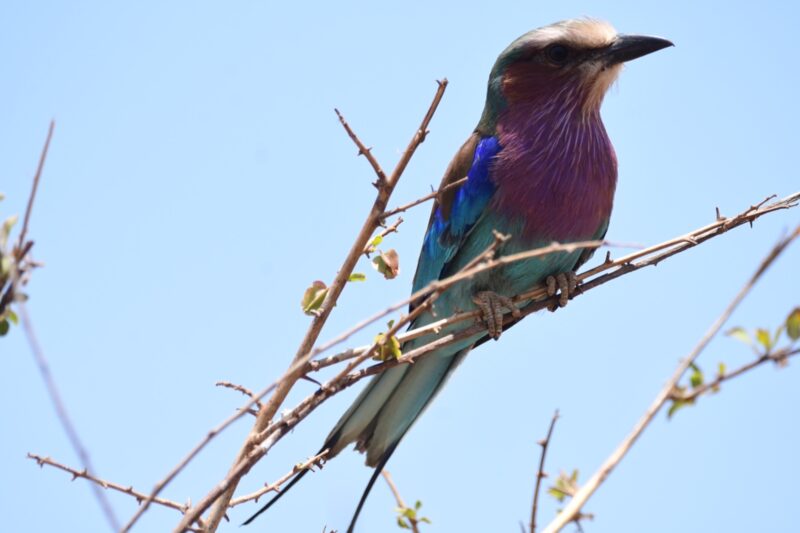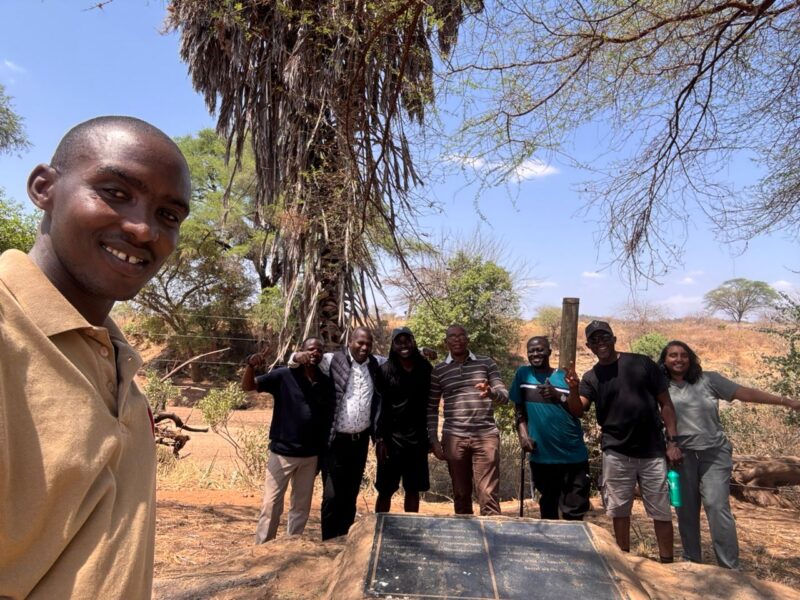The morning sun cast a warm glow over the savannah as we departed Rhino River Camp at 6:30 a.m., embarking on what would become more than just a typical safari in Meru National Park.
Our small group of media representatives – myself from Ghana, Andrew from Nigeria, Christine from France, Edgar from Uganda, and Wilson from Tanzania – was guided by Josphat Karanja from the Kenya Tourism Board.
Our ultimate destination was Elsa the Lioness’ gravesite, a symbol of wildlife conservation and a testament to Kenya’s rich history of animal protection.
We had arrived at Meru the previous day, settling into the tranquil Rhino River Camp nestled within the park’s lush landscape. After a relaxing evening, which included a stunning sundowner amidst the wild, we were eager for the day ahead, unaware that this journey would resonate deeply with each of us. Our guide expertly navigated the park’s rugged terrain, and within minutes we were surrounded by the sights and sounds of the untamed wilderness.
Meru National Park, though less known compared to Kenya’s Maasai Mara or Amboseli, offers a breathtaking array of wildlife and landscapes. Our early start rewarded us with sightings of elephants grazing quietly among the acacia trees and buffaloes watching us warily from a distance. These encounters, while awe-inspiring, felt like mere prelude to the main purpose of our expedition.
The story of Elsa, made famous by Joy and George Adamson’s book Born Free and its subsequent film adaptation, is a tale of compassion, dedication, and the struggle for survival in the wild. Elsa’s journey from being an orphaned cub, raised by the Adamsons, to becoming a symbol of wildlife conservation, has captured hearts worldwide. The Adamsons’ efforts to reintegrate Elsa into the wild, after raising her as an orphaned cub, were groundbreaking at the time and set a precedent for wildlife conservationists globally.
As we ventured deeper into the park, we encountered more of its majestic residents: impalas darting across our path, duikers and waterbucks moving gracefully through the underbrush, and giraffes towering over the trees, their long necks reaching for leaves high above. Zebras trotted beside us, their black-and-white stripes stark against the golden savannah. A symphony of birdcalls filled the air, a testament to the park’s diverse avian population. Yet, amidst all these wonders, there was a sense of anticipation in the air, a feeling that we were being drawn toward something greater.


Despite the detailed planning and our guide’s expertise, the route to Elsa’s grave proved elusive. We veered off the trail a few times, testing our guide’s navigational skills and our patience. The challenges of navigating the dense thickets and narrow paths, combined with swarms of tsetse flies, made the journey arduous. But there was a palpable sense of purpose, as if Elsa herself was leading us to her final resting place.
After nearly three hours of winding through the park, we finally arrived at the modest gravesite. Nestled under the shade of an ancient tree, Elsa’s grave is marked by a simple plaque, a quiet testament to a life that had such a profound impact. The setting was serene, and as we stood there, it was impossible not to be moved by the story of this remarkable lioness and the couple who had dedicated their lives to her.


Sitting down to a bush breakfast by Elsa’s grave, we were enveloped in a stillness that felt sacred. The rustling leaves and distant calls of animals were the only sounds, adding to the solemn atmosphere. As we sipped our coffee, we reflected on the Adamsons’ incredible journey—raising Elsa from a cub and teaching her the skills to survive on her own in the wild. Her life, cut short by a tick-borne disease, ended here in Meru, but her legacy endures as a symbol of the complex relationship between humans and the natural world.
Elsa’s story is not just one of a lioness raised and released into the wild; it is also a narrative of resilience and the enduring spirit of conservation. When Elsa returned to the Adamsons with her own cubs—Jespah, Gopa, and Little Elsa—it was a testament to her trust and the deep bond she shared with those who had nurtured her. Her legacy, and that of the Adamsons, continues to inspire conservation efforts in Kenya and beyond.
As we prepared to leave Elsa’s grave, our hearts were full, our minds reflective. The journey back felt shorter, as though the land had become more familiar and the path clearer. We had set out to witness the beauty of Kenya’s wildlife, but what we found was a connection to a story that transcends time—a story of freedom, courage, and the unbreakable bond between humans and nature.


This visit is part of the Kenya Tourism Board’s initiative to showcase the country’s rich and diverse offerings ahead of the 2024 Magical Kenya Tourism Expo (MKTE). From September 27th to October 1st, international media representatives have been experiencing Kenya’s stunning landscapes, wildlife, and cultural heritage, culminating in the expo from October 2nd to 4th at Uhuru Gardens in Nairobi. The MKTE, East Africa’s premier travel trade show, will attract over 5,000 delegates, offering a platform for networking and collaboration between local tourism enterprises and international buyers.


For those planning to explore Kenya beyond the well-trodden tourist circuits, Meru National Park is a hidden gem waiting to be discovered. It offers not only the chance to see an array of wildlife but also to connect with the legacy of Elsa and the Adamsons. A visit to Elsa’s grave is more than just a stop on a safari—it’s a pilgrimage to a place that embodies the spirit of conservation and the enduring beauty of the wild.
We encourage everyone attending the MKTE or planning a trip to Kenya to make time for Meru. Walk in the footsteps of the Adamsons, feel the wild pulse of Africa, and pay tribute to Elsa’s extraordinary story.
It’s an experience that will leave you with a deeper appreciation of the delicate balance between humans and nature, and the timeless call of the wild.
About the author
Francis Doku is the Chief Operations Officer of Plugin Digital Limited and the host of the Africa Rising podcast. He is a Ghanaian tourism, arts and culture curator with decades of experience in media, marketing and advertising.
DISCLAIMER: The Views, Comments, Opinions, Contributions and Statements made by Readers and Contributors on this platform do not necessarily represent the views or policy of Multimedia Group Limited.
